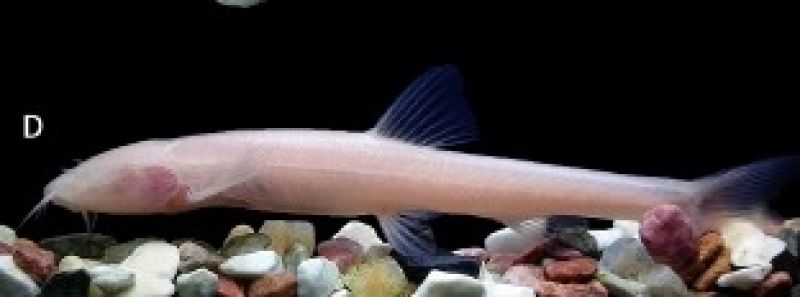Triplophysa xuanweiensis
Lu, Li, Mao and Zhao 2022

| ORDER | SUB-ORDER | FAMILY |
|---|---|---|
| Cypriniformes | Cobitoidei | Nemacheilidae |
Synonyms
None.
Country
ChinaTypes
Holotype: ASIZB 223816 68.6 mm SL
Paratypes: ASIZB 223817-223831 (15 specimens), 21.7–85.5 mm SL
Distribution
Known only from the type locality: Xinle Village, Tangtang Town, Xuanwei City, Yunnan Province, China, Beipan River system, a tributary of the Hongshui River (26°32′44"N, 104°08′01″E).
Systematics
Based on mitochondrial cytochrome b sequences the following troglobitic species of Triplophysa form a monophyletic group:
T. huapingenis, T. baotianensis, T. zhenfengensis, T. xuanweiensis, T. erythraea, T. rosa, T. longliensis, T. xiangxiensis, T. nasobarbatula, T. tianeensis, T. nandanensis
Conservation Status
TLO [NE]
Museum Holdings
As above only.
Internet Resources
urn: lsid: zoobank.org: pub: 1C73EFC4-1820-4294-A2EC-1DF5B4F99178
Triplophysa xuanweiensis LSID:
urn: lsid: zoobank.org: act: BFC02521-FF34-4871-BC56-FE26C74A01FB
Key References
- Huang, T.F., Zhang, P.L., Huang, X.L., Wu, T., Gong, X.Y., Zhang, Y.X., Peng, Q.Z. and Liu, Z.X. (2019)
- Lu, Z.-M., Li1, X.-J., Lü, W.-J., Huang. J.-Q., Xu, T.-K., Huang, G., Qian, F.-Q., Yang, P., Chen, S.-G., Mao, W.-N. and Zhao, Y.-H. (2022)
- He, Y. and He, D.K. (2023)
- Wang, Y.D., Dong, X.Y. and Liu, H.B. (2024)
- Song, S., Cao, J., Xiang, H., Liu, Z. and Jiang, W. (2025)
| Huang, T.F., Zhang, P.L., Huang, X.L., Wu, T., Gong, X.Y., Zhang, Y.X., Peng, Q.Z. and Liu, Z.X. | Journal Article | 2019 | A new cave-dwelling blind loach, Triplophysa erythraea sp. nov. (Cypriniformes: Nemacheilidae), from Hunan Province, China. |
| Lu, Z.-M., Li1, X.-J., Lü, W.-J., Huang. J.-Q., Xu, T.-K., Huang, G., Qian, F.-Q., Yang, P., Chen, S.-G., Mao, W.-N. and Zhao, Y.-H. | Journal Article | 2022 | Triplophysa xuanweiensis sp. nov., a new blind loach species from a cave in China (Teleostei: Cypriniformes: Nemacheilidae) |
| He, Y. and He, D.K. | Journal Article | 2023 | X-ray microtomography study of cranium, pectoral fin and girdle, and Weberian Apparatus development in juvenile Triplophysa stewarti (Nemacheilidae) |
| Wang, Y.D., Dong, X.Y. and Liu, H.B. | Journal Article | 2024 | The complete mitochondrial genome of Triplophysa erythraea (Huang et al. 2019)(Cypriniformes, Nemacheilidae) |
| Song, S., Cao, J., Xiang, H., Liu, Z. and Jiang, W. | Journal Article | 2025 | Comparative mitogenomic analysis of Chinese cavefish Triplophysa (Cypriniformes: Nemacheilidae): novel gene tandem duplication and evolutionary implications |
